Writing to Isabella Stewart Gardner in 1899, Bernard Berenson enthused over the opportunity to buy a painting by Renaissance master Simone Martini: “I wish you to acquire for a mere song, ‘a rare and radiant’ masterpiece by one of the rarest and greatest masters. You bought at Bardini’s you remember a little Madonna by Lippo Memmi for which you paid £400. I now wish you to buy a gorgeous polyptych by Lippo’s far greater master, Simone Martini… Please cable at once YESIMONE, if you want it. But really at once please, or on your own head be its loss.”
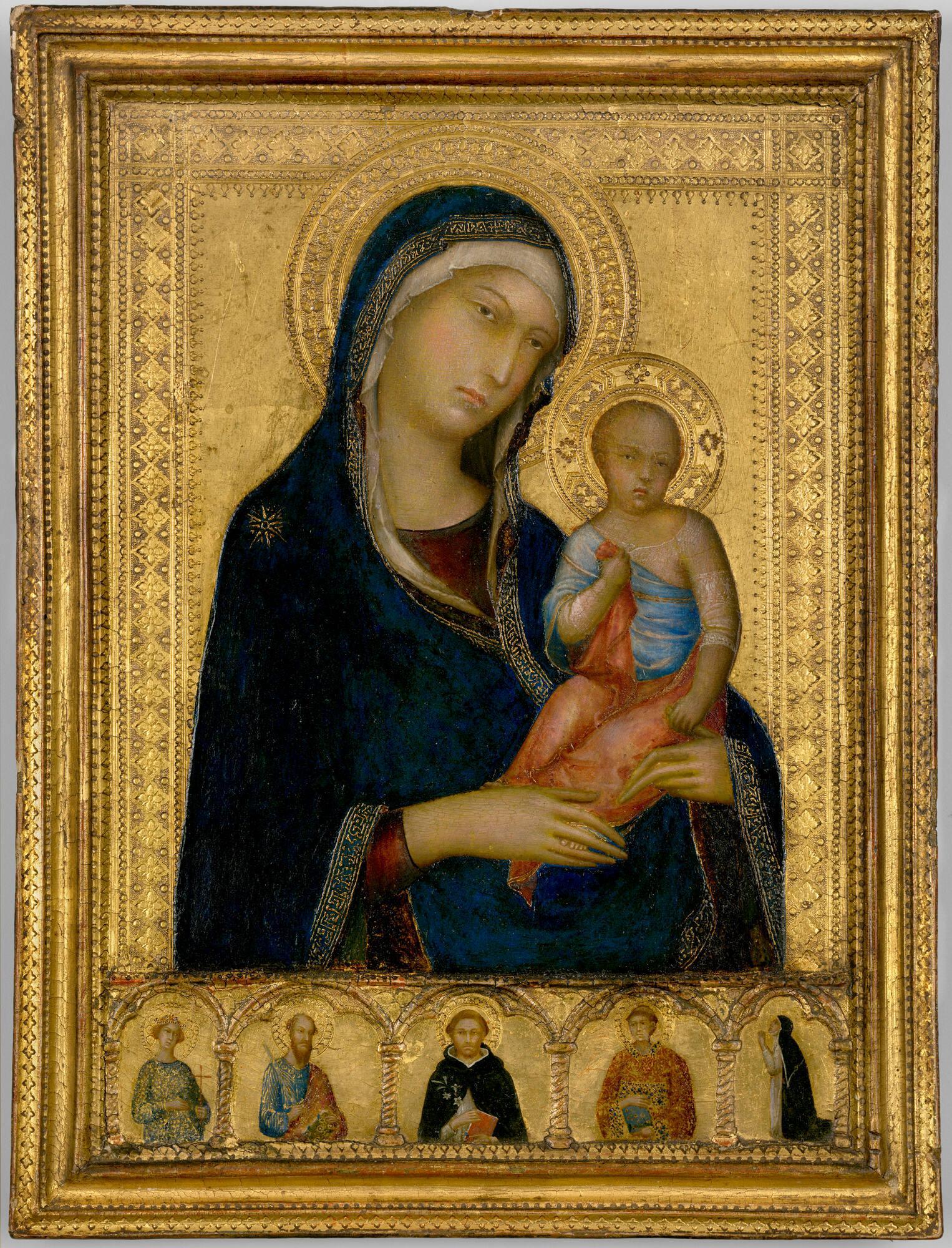
Isabella Stewart Gardner Museum, Boston (P30w8)
Simone Martini (Siena, about 1284 - 1344, Avignon), Virgin and Child with Saints Helen, Paul, Dominic, Stephen (?), and a Dominican Nun, about 1325. Tempera and tooled gold on panel, 33.4 x 25.4 x 1.9 cm (13 1/8 x 10 x 3/4 in.) with engaged frame
An Affinity for Italian Art
Berenson’s letter touches on the value and authorship of a rare altarpiece, also known as a polyptych, created by one of the biggest international celebrity artists of the 14th century. The aforementioned masterpiece was the work of Simone Martini, a student at the Siena School of Painting and pioneer of goldwork technique. The work referenced in Berenson’s letter has been a centerpiece at the heart of the Gardner Museum’s collection of Italian art since its opening.
But how did Gardner come to love and appreciate Italian devotional art? For one, she had unusual tastes and was drawn to avant-garde innovators in the art world, which included Martini and other Sienese masters. She also regularly attended art lectures and gleaned inspiration from her travels to Europe. Gardner made Italy a regular stop on her travels, voyaging for the first time as an adult in 1884 and following up with subsequent trips in 1886, 1888, 1890, and 1892.
With the benefit of Harvard lectures and Berenson’s friendship, her appreciation of Italian art grew over the years, as evidenced by her travel albums. Gardner filled them with photographs of Italian paintings, many of them the work of primitives using gold grounds, from the most important museums and galleries. Two of her albums were overflowing with photographs purchased on site, many of which reproduced paintings and frescoes, including those by Simone Martini, Duccio, Ambrogio Lorenzetti, Sano di Pietro, Giovanni di Paolo, and others. While she still did not own any Sienese paintings at the time, Gardner was paying close attention to them.
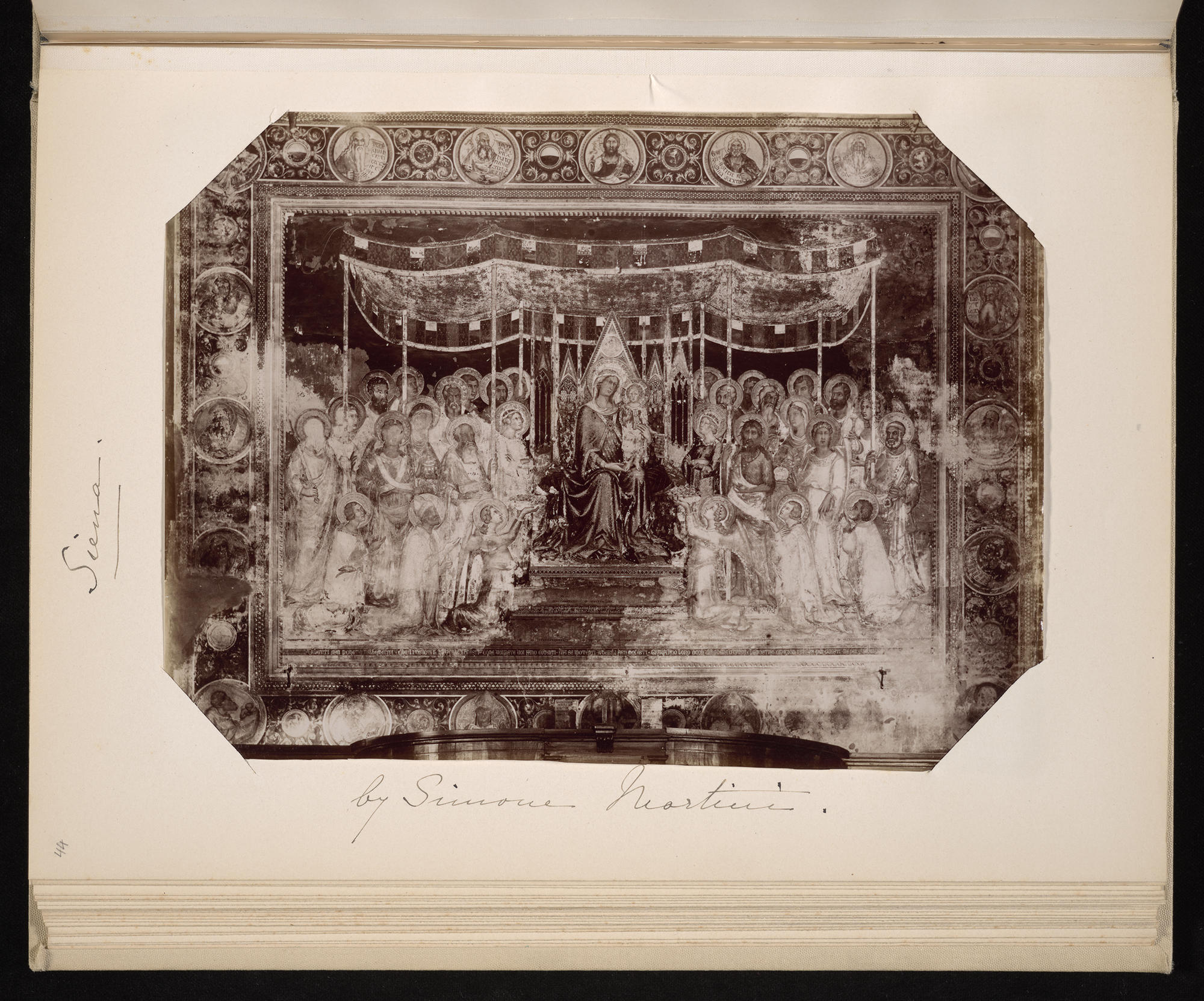
Isabella Stewart Gardner Museum, Boston (v.1.b.4.28)
Isabella Stewart Gardner, Travel Album: Germany and Italy (p. 44), about 1896-1897. Bound album including collected photographs, found papers, and pen and ink annotations, 32 x 20 x 4.5 cm (12 5/8 x 7 7/8 x 1 3/4 in.)
Gardner’s Artistic Cohorts
Another influence on her affinity for Italian art was born from her unique friendships with some of the greatest thinkers and art enthusiasts of her time, whom she relied on heavily as she acquired pieces for her collection. Berenson and Harvard professor Charles Eliot Norton were two such confidants who worked closely with Gardner on her Italian acquisitions.
One year before Berenson wrote to Gardner about Martini’s altarpiece, Norton included the polyptych on a list of works for sale that was accompanied by a roll of photographs. In the accompanying letter, he observed that “good works of this class are rare now-a-days,” while acknowledging the polyptych’s damaged condition. Norton’s admonition may have put Gardner off, for she did not buy the altarpiece until 1899, and then only under Berenson’s seal of approval. She had done the same one year earlier, when Norton had mentioned the opportunity to buy a spectacular Botticelli and suggested that she “let Berenson know at once” so that he could both authenticate the work and perhaps negotiate on her behalf. His affirmations of authorship clearly put her mind at ease, because she purchased both through him, the latter a few months after the Simone altarpiece.
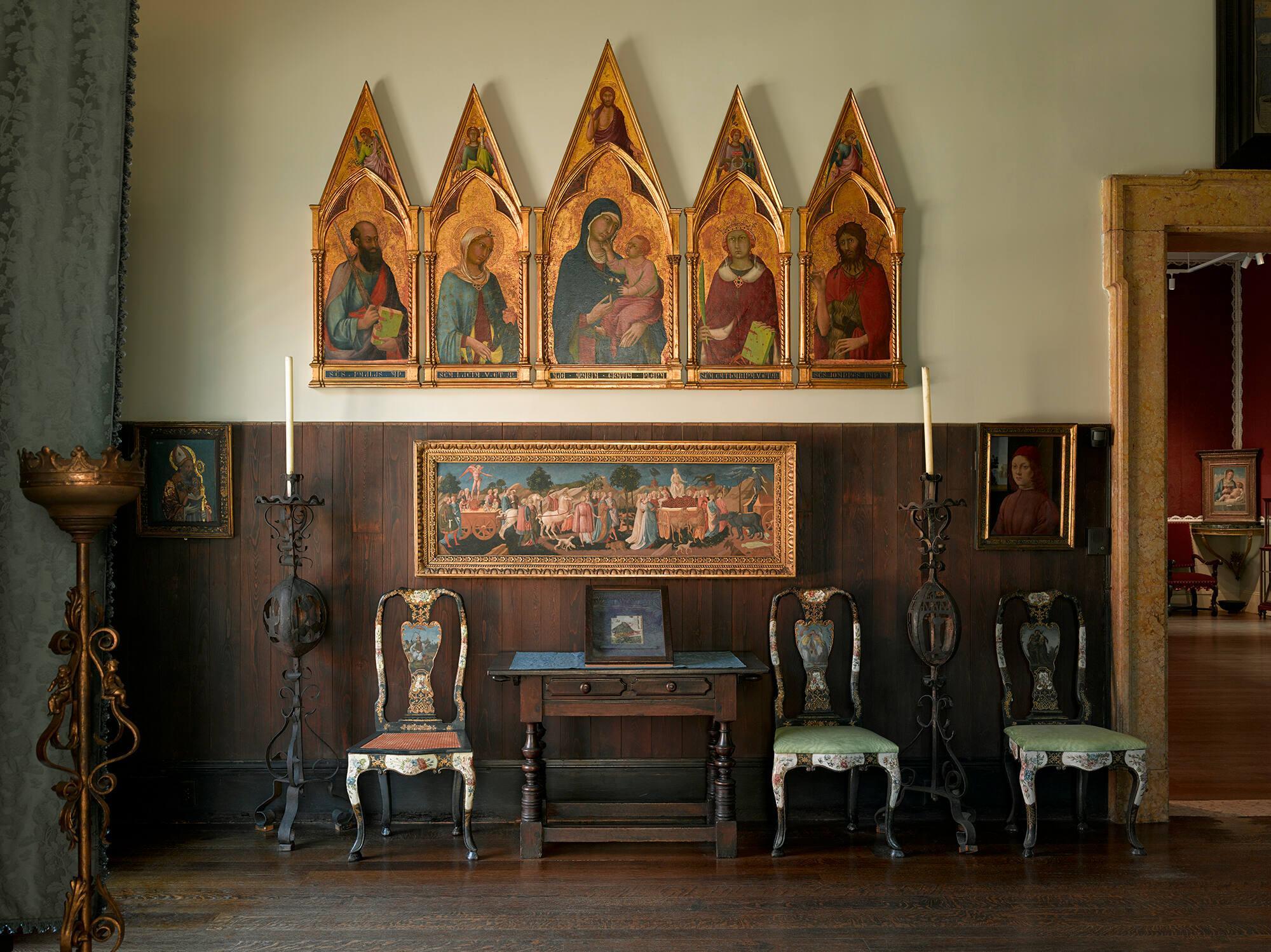
Isabella Stewart Gardner Museum, Boston
Simone Martini’s Virgin and Child with Saints (Servite Polyptych), about 1324-25, in the Early Italian Room
This collaboration exposed Gardner to opportunities appreciated by only a select few collectors in the United States. She was a pioneer in that effort, being the first to obtain a work by Martini.Gardner had an appreciation for early Italian art that few American contemporaries shared, and she satisfied it with purchases still well within her budget with the help of her friends.
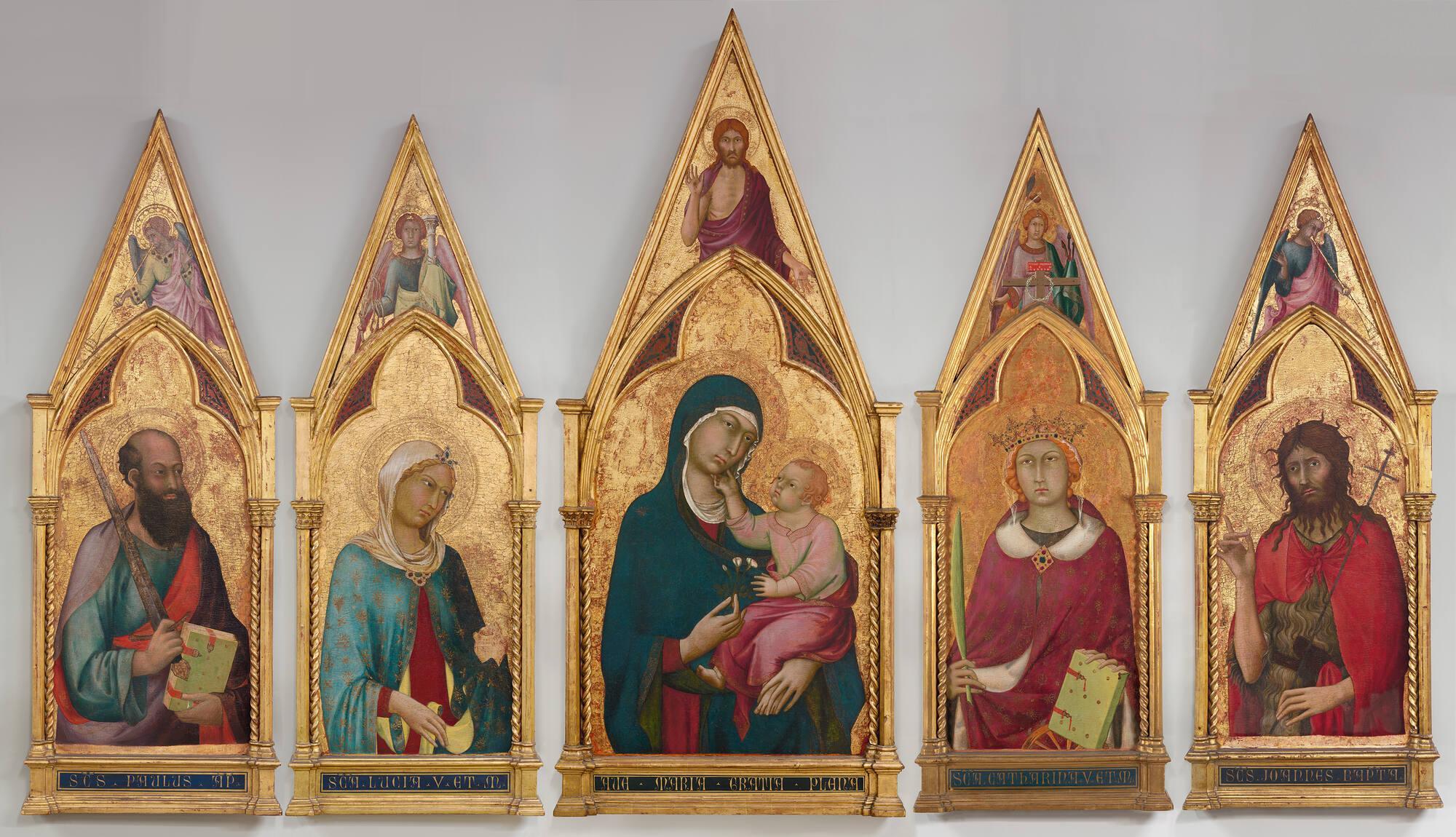
Isabella Stewart Gardner Museum, Boston (P15e4.1-5)
Simone Martini (Siena, about 1284 - 1344, Avignon), Virgin and Child with Saints, about 1320. Gold and tempera on panel, 131 x 274.3 cm (51 9/16 x 108 in.)
A Growing Collection
During her lifetime, Gardner continued to make changes to the installation, and certain spaces—like the Gothic Room—remained closed to visitors. Martini’s polyptych hung in this transitional space from at least 1903 until her completion of the Early Italian Room in 1915. In 1916, the Boston Evening Transcript announced “New Steps Toward Perfection in Mrs. Gardner’s Venetian Palace, Fenway Court,.” Eliminating the museum’s ground floor music room, she added two galleries (the Spanish Cloister, anchored by John Singer Sargent’s El Jaleo, and the Tapestry Room), opened the Macknight Room, and transformed the gallery of Chinese and Japanese art into a gallery of gold grounds and early Italian primitives in the Early Italian Room. Several newspapers picked up the story, one featuring a newly acquired panel attributed to Gentile da Fabriano. The Boston Sunday Post’s pictorial section even featured the small Virgin and Child, still inaccessible in the Gothic Room.
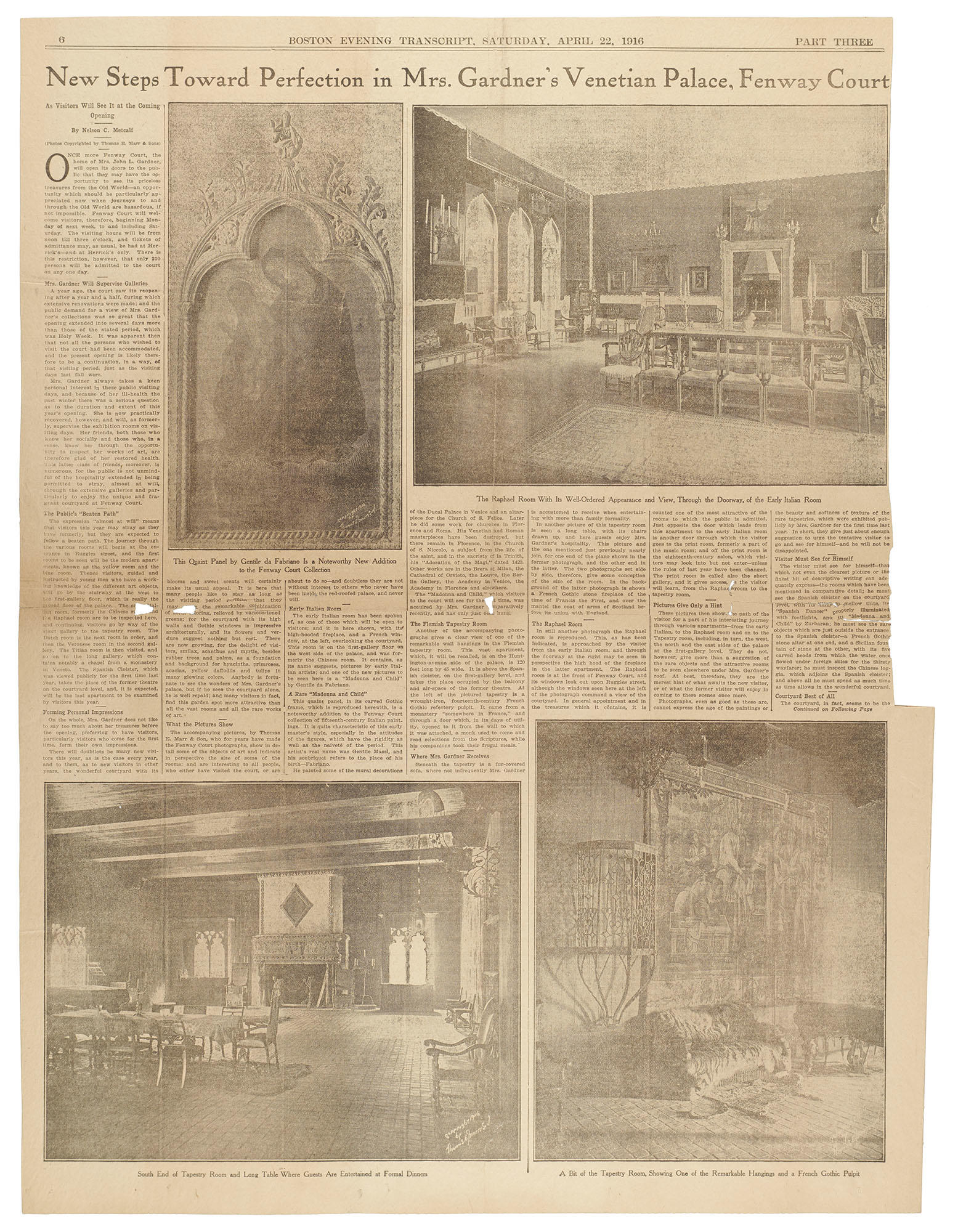
Isabella Stewart Gardner Museum, Boston. Photo: Amanda Guerra
“New Steps Toward Perfection in Mrs. Gardner’s Venetian Palace,” Boston Evening Transcript, 1961.
An Homage to Gardner, a Renaissance Woman Herself
By the end of her life, Gardner no longer collected primitives—or any other works of art—even if her entire life remained inextricably connected to them. In March 1920, her friend Elsie de Wolfe, the New York interior designer, paid a visit to Fenway Court for the last time, and described Gardner, who had been incapacitated by a stroke in 1919, resting in her bedroom on the museum’s fourth floor like an apparition: “She was lying on a couch of white linen and her hair was entirely covered with linen bands of exceeding fineness. She looked like a corpse prepared for burial. Indeed, John Sargent made a drawing of her which now hangs in her gallery. [...] She looked so remote from anything connected with this world that I could only think of some of the primitive pictures of saints. Yet in my heart I knew she was not a saint.”
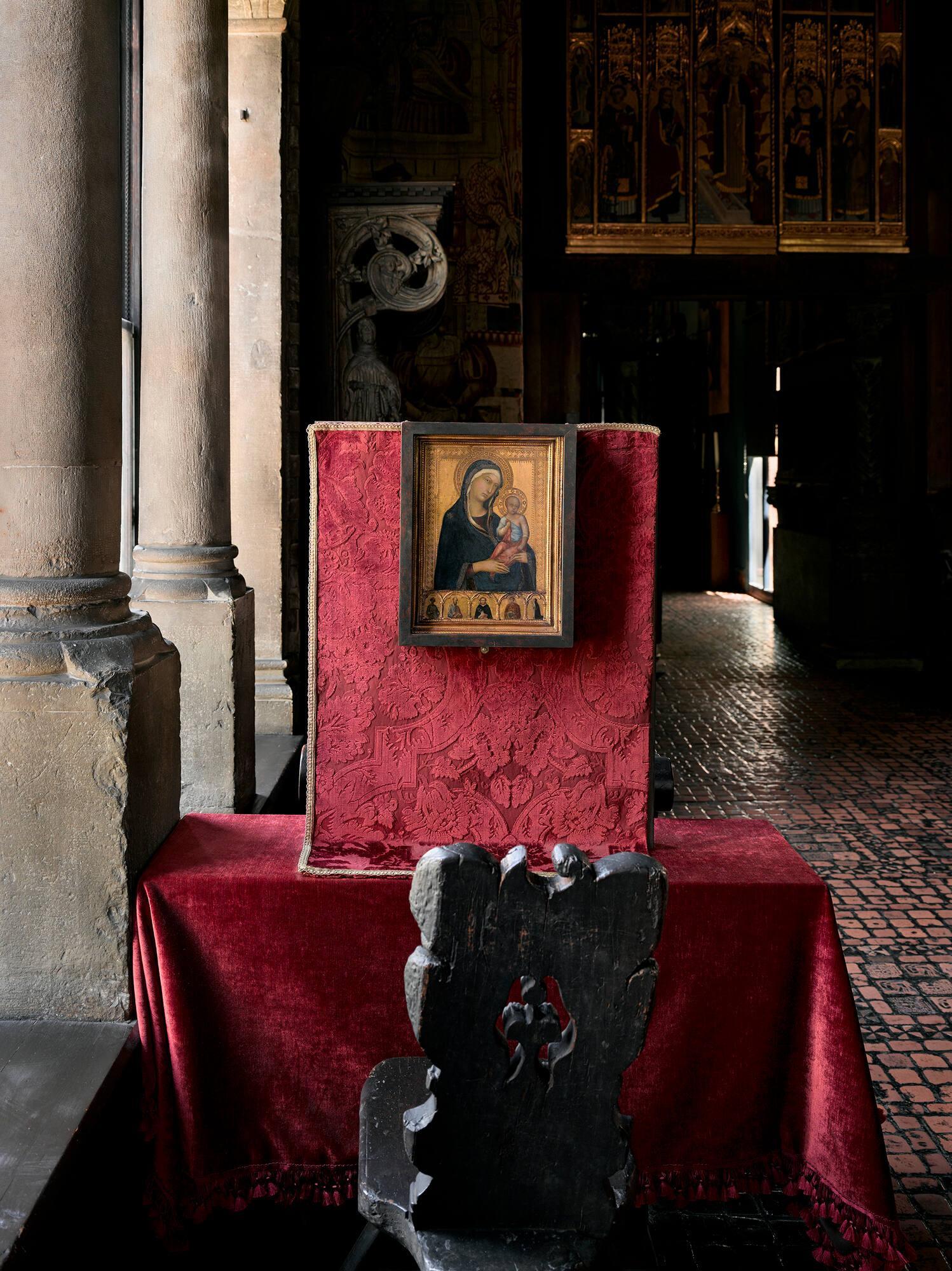
Isabella Stewart Gardner Museum, Boston
Simone Martini’s Virgin and Child with Saints, about 1325, in the Gothic Room
Gardner was no saint, but as de Wolfe observes, she brought many pictures of them to the United States; de Wolfe’s image of her provides a fitting tribute to this American pioneer in the field of Italian primitives.
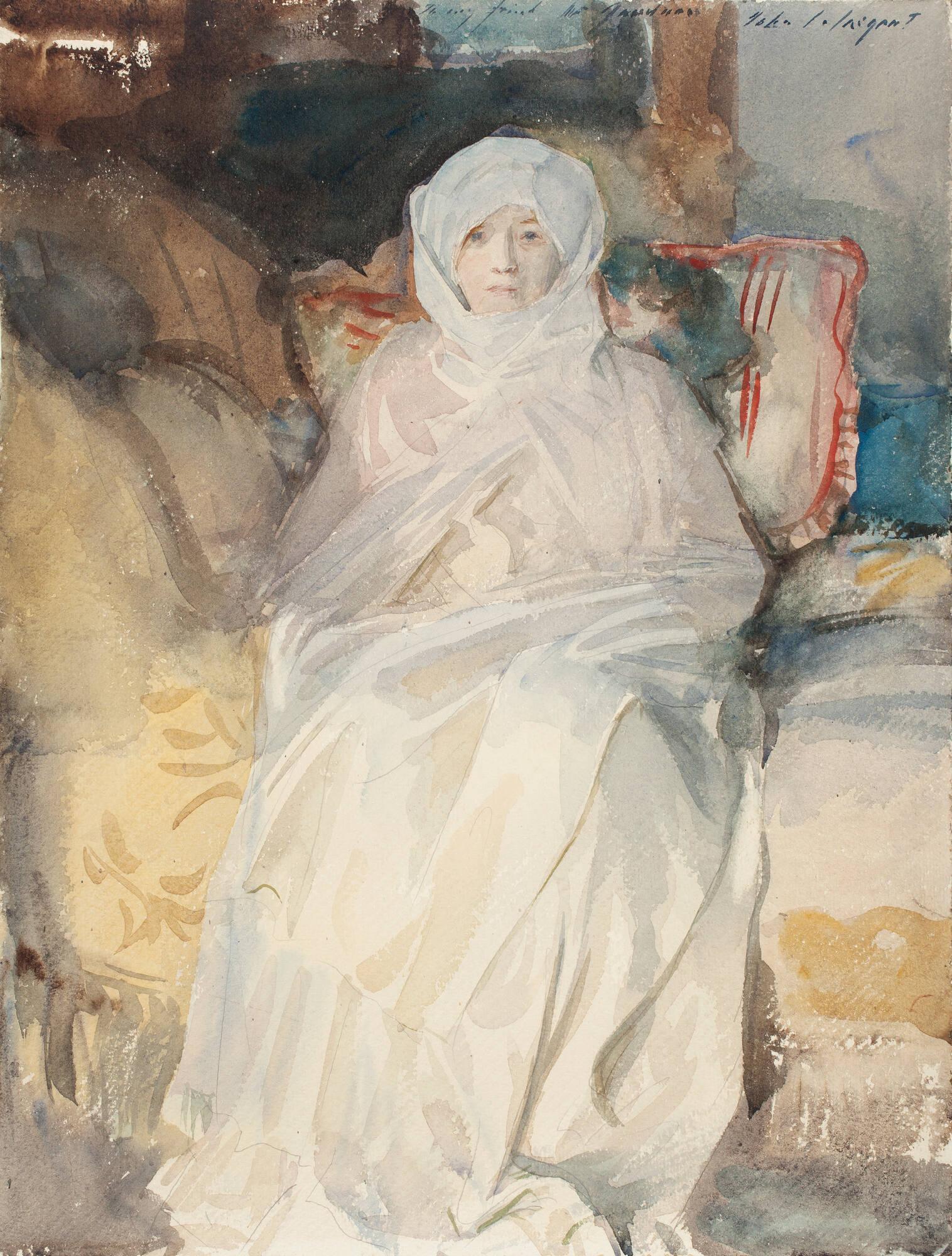
Isabella Stewart Gardner Museum, Boston (P11e13)

Visit the Exhibit
Metal of Honor: Gold from Simone Martini to Contemporary Art

Buy the Catalogue
Simone Martini in Orvieto

Read More on the Blog
Francesco Torbido and the Diversity of 16th Century Venice